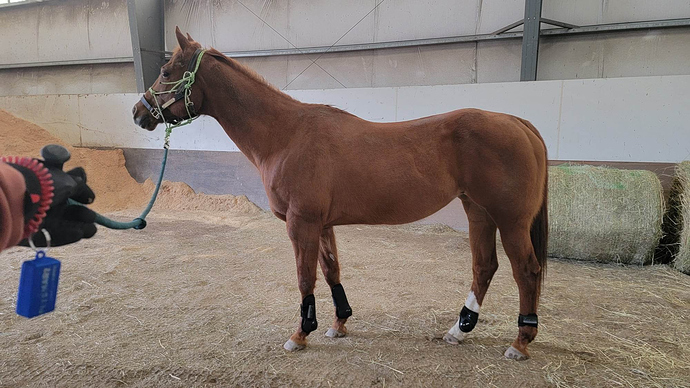It’s actually the lumbosacral junction that you ideally would like to see above or slightly in front of, rather than behind, the point of hip (tuber coxae). It’s not so easy to see the LS junction in pictures so we can use the sacral tuberosities (the pointy bits that get really pointy with the hunter’s bump) to help guess. That said, the LS junction is very easy to palpate in person - run your fingers gently along the lumbar spine, and when you come to a soft dip in that area (after the back, before the pointy bits), that’s it!
To the OP, I would recommend holding off riding and stick to groundwork for now. You can use the groundwork both to help her with the mental/emotional side of things as well as work on building the right kind of physical strength. You mention her upside down neck… well that kind of “upside down” build is actually throughout her whole body. Whatever you do with her, you want to keep a close eye on the posture she is using… no exercise will help if she is bracing and hollow in the way she does it, but if they encourage positive postural signs like dropping the head while lifting the base of the neck, coiling the loins, etc, then it’s positive. I would focus on slower work where she can unwind the old patterns and build new ones carefully.
Besides the already mentioned resources which are all great, I would also add looking into TTouch teachings. It’s a mix of bodywork and training which aims to keep the horse in a relaxed state and work with the nervous system to create desirable patterns and connections.

